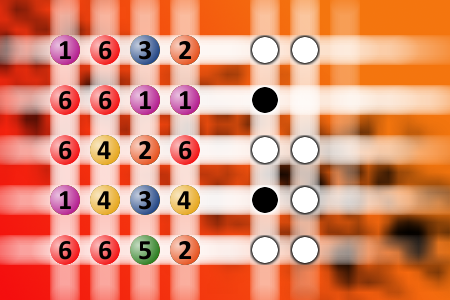What a winning combination?
The computer chose a secret code (sequence of 4 digits from 1 to 6). Your goal is to find that code. Black circles indicate the number of hits on the right spot. White circles indicate the number of hits on the wrong spot.Correct answers: 3
#brainteasers #mastermind

Honey, has anyone ever told you....
After the party, as the couple was driving home, the woman asks her husband, "Honey, has anyone ever told you how handsome, sexy and irresistible to women you are?"
The flattered husband said, "No, dear they haven't."
The wife yells, "Then what the heck gave you THAT idea at the party tonight?"

